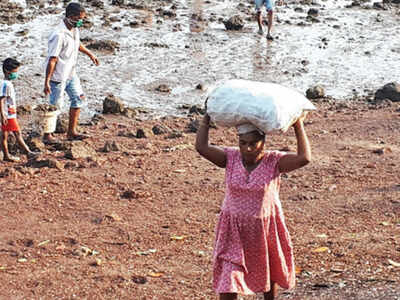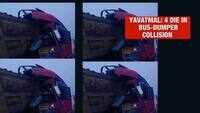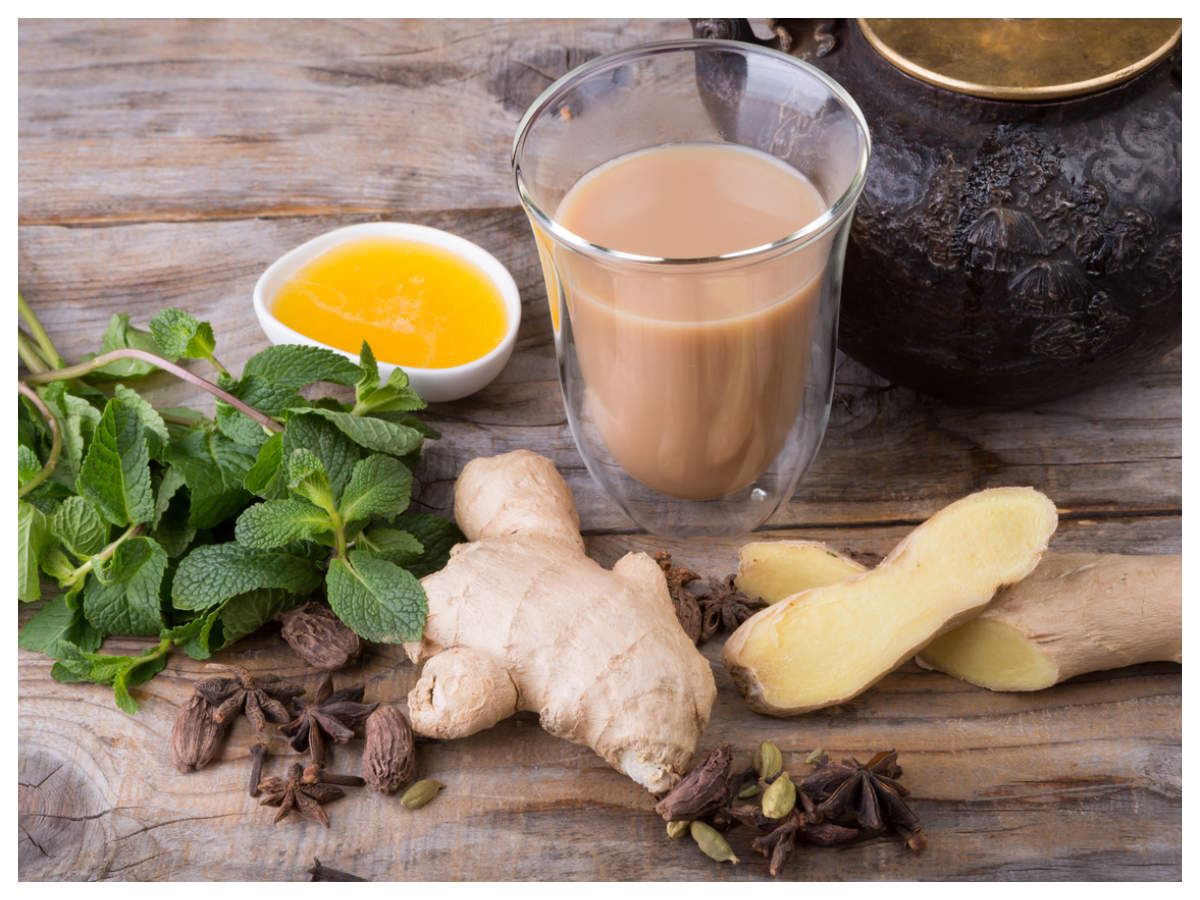
PANAJI: When the summer tide ebbed to its lowest for a few days, multitudes of locals and people from outlying villages swooped down on the river bed in the Zuari bay and carried away sackloads and buckets full of kalvam.
The Zuari’s southern bank, comprising Sancoale, Chicalim and the adjacent areas, is a rich habitat for bivalves and oysters. The Zuari bay itself is a fish biodiversity hotspot with over 320 recorded species.
Discerning onlookers and biodiversity managers were left aghast seeing multitudes of harvesters cart away massive quantities of oysters. The crop plunder has left them pondering about the ignorance about oyster growth dynamics among the general public, and ideating future management strategies.
“Carrying away ‘kalvam hadde’ literally destroys the seed and should not be allowed. Earlier, some local fishermen would break the shells and take away only the oysters, but now, people are insensitive and commercial-minded,” Lawrence Fernandes, a Sancoale biodiversity management committee (SBMC) member said.
The oyster shells resemble rock pieces, but consist of lime (calcium carbonate), hardened over the years. “The mother shells, alive or dead, are hosts for the floating oyster larvae (spat) to settle down and grow. The spat prefers the mother shells, which are essential for their growth, or else, there will be no fresh recruitment next year,” Baban Ingole, retired chief scientist, biological oceanography, National Institute of Oceanography said.
The unsustainable practices have saddened a few onlookers. “The foraging has emptied the riverbed of the precious organism and inflicted serious ecological damage to the waterbody,” Cyril Fernandes, a local human rights activist said.
In Ribandar and other estuaries, similar harvesting practices have caused decline in oyster growth, locals said. The ideal way is to break the shell and take away only the oysters.
Fried or cooked with masala, kalvam are a delicacy on the dinner table.
In Zuari bay, the kalvam crop had flourished after many years due to a relatively clean and quiet environment.
Some suggest a few crucial steps to preserve the remaining crop. “Conserving shells is like preserving seed in agricultural terms and a small demarcated area could be sealed off from harvesters to ensure the survival of brood stock,” Ingole said.
Concerned citizens want biodiversity managers to prevent another assault during low tide after May 20. “Continuing these unsustainable practices may spell doom for the endangered Zuari bay,” Cyril Fernandes said.
The SBMC member said that the panel will seek intervention of higher authorities. “We will also seek professional help from scientists to conserve the resource,” Lawrence Fernandes said.
The Zuari’s southern bank, comprising Sancoale, Chicalim and the adjacent areas, is a rich habitat for bivalves and oysters. The Zuari bay itself is a fish biodiversity hotspot with over 320 recorded species.
Discerning onlookers and biodiversity managers were left aghast seeing multitudes of harvesters cart away massive quantities of oysters. The crop plunder has left them pondering about the ignorance about oyster growth dynamics among the general public, and ideating future management strategies.
“Carrying away ‘kalvam hadde’ literally destroys the seed and should not be allowed. Earlier, some local fishermen would break the shells and take away only the oysters, but now, people are insensitive and commercial-minded,” Lawrence Fernandes, a Sancoale biodiversity management committee (SBMC) member said.
The oyster shells resemble rock pieces, but consist of lime (calcium carbonate), hardened over the years. “The mother shells, alive or dead, are hosts for the floating oyster larvae (spat) to settle down and grow. The spat prefers the mother shells, which are essential for their growth, or else, there will be no fresh recruitment next year,” Baban Ingole, retired chief scientist, biological oceanography, National Institute of Oceanography said.
The unsustainable practices have saddened a few onlookers. “The foraging has emptied the riverbed of the precious organism and inflicted serious ecological damage to the waterbody,” Cyril Fernandes, a local human rights activist said.
In Ribandar and other estuaries, similar harvesting practices have caused decline in oyster growth, locals said. The ideal way is to break the shell and take away only the oysters.
Fried or cooked with masala, kalvam are a delicacy on the dinner table.
In Zuari bay, the kalvam crop had flourished after many years due to a relatively clean and quiet environment.
Some suggest a few crucial steps to preserve the remaining crop. “Conserving shells is like preserving seed in agricultural terms and a small demarcated area could be sealed off from harvesters to ensure the survival of brood stock,” Ingole said.
Concerned citizens want biodiversity managers to prevent another assault during low tide after May 20. “Continuing these unsustainable practices may spell doom for the endangered Zuari bay,” Cyril Fernandes said.
The SBMC member said that the panel will seek intervention of higher authorities. “We will also seek professional help from scientists to conserve the resource,” Lawrence Fernandes said.

Coronavirus outbreak
Trending Topics
LATEST VIDEOS
City
 Covid-19: 67 cops test positive at District Police lines in Anantnag
Covid-19: 67 cops test positive at District Police lines in Anantnag  Shocking apathy in Srinagar: Suspected Covid-19 patient ‘dumped’ on the stairs of a hospital
Shocking apathy in Srinagar: Suspected Covid-19 patient ‘dumped’ on the stairs of a hospital  Maharashtra: Four migrant workers killed, 15 injured in bus-truck collision in Yavatmal
Maharashtra: Four migrant workers killed, 15 injured in bus-truck collision in Yavatmal  Amit Shah assures all help to Mamata Banerjee as Cyclone Amphan nears Bengal
Amit Shah assures all help to Mamata Banerjee as Cyclone Amphan nears Bengal
More from TOI
Navbharat Times
Featured Today in Travel
Quick Links
Kerala Coronavirus Helpline NumberHaryana Coronavirus Helpline NumberUP Coronavirus Helpline NumberBareilly NewsBhopal NewsCoronavirus in DelhiCoronavirus in HyderabadCoronavirus in IndiaCoronavirus symptomsCoronavirusRajasthan Coronavirus Helpline NumberAditya ThackerayShiv SenaFire in MumbaiAP Coronavirus Helpline NumberArvind KejriwalJammu Kashmir Coronavirus Helpline NumberSrinagar encounter
Get the app



